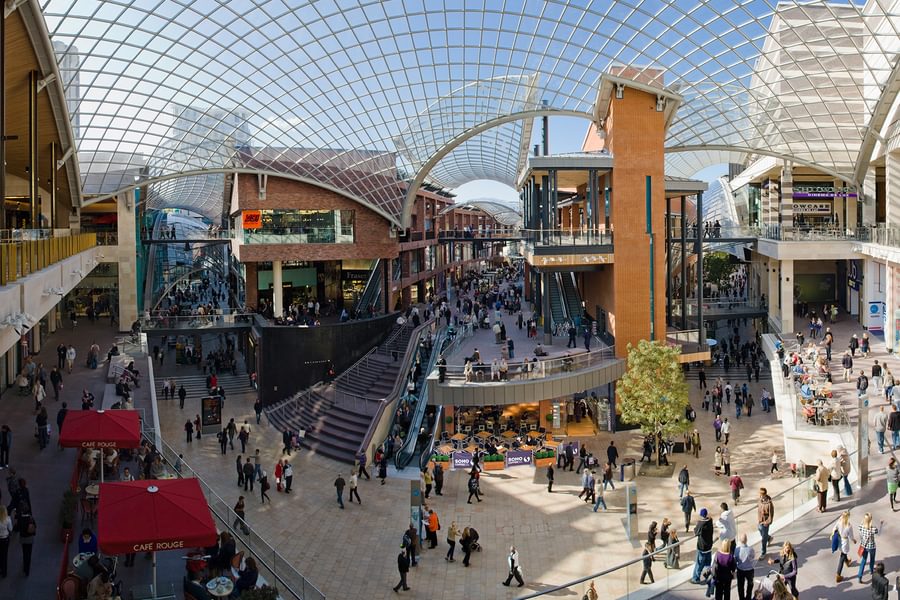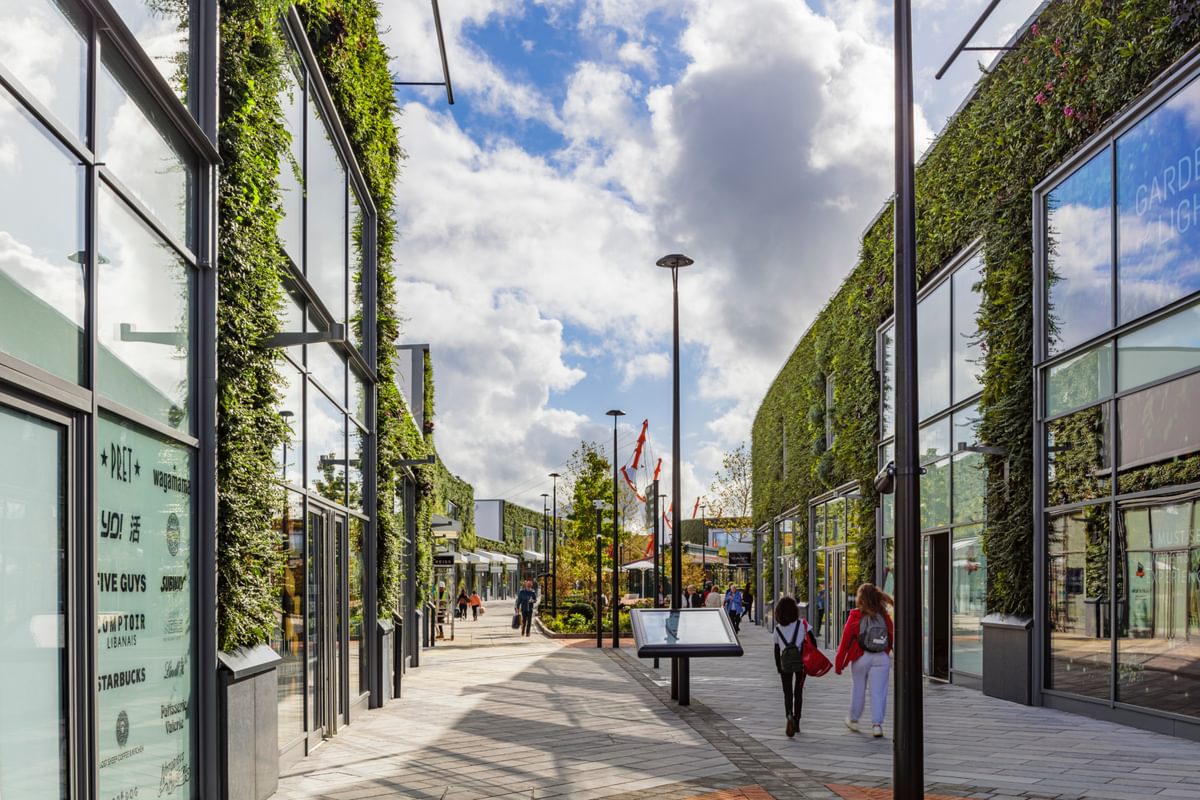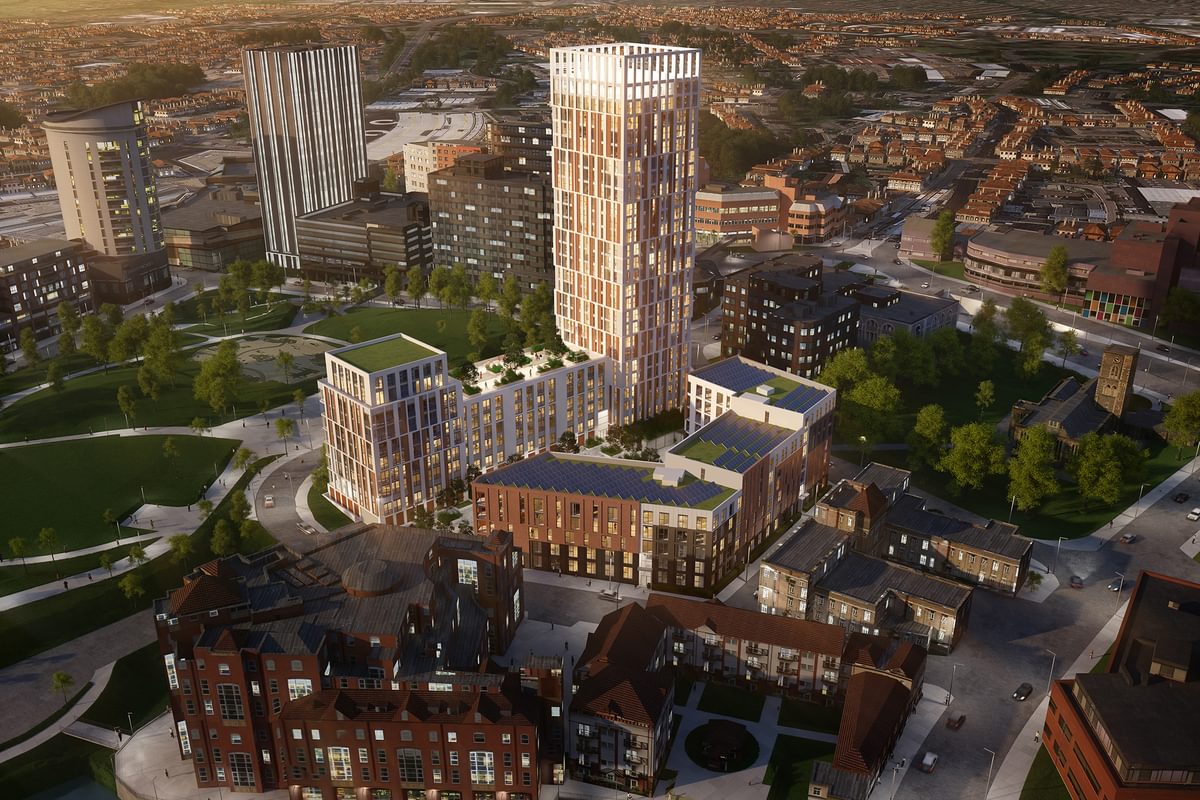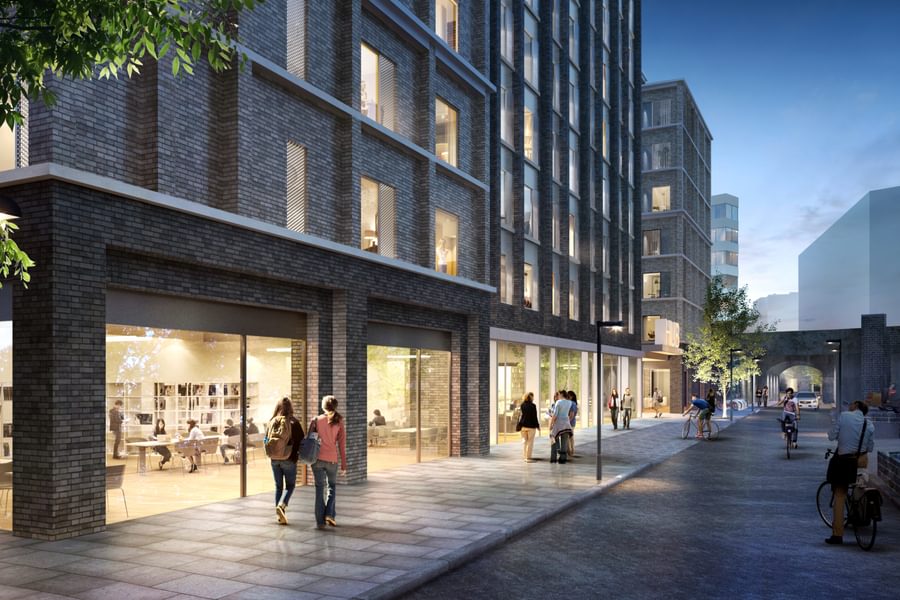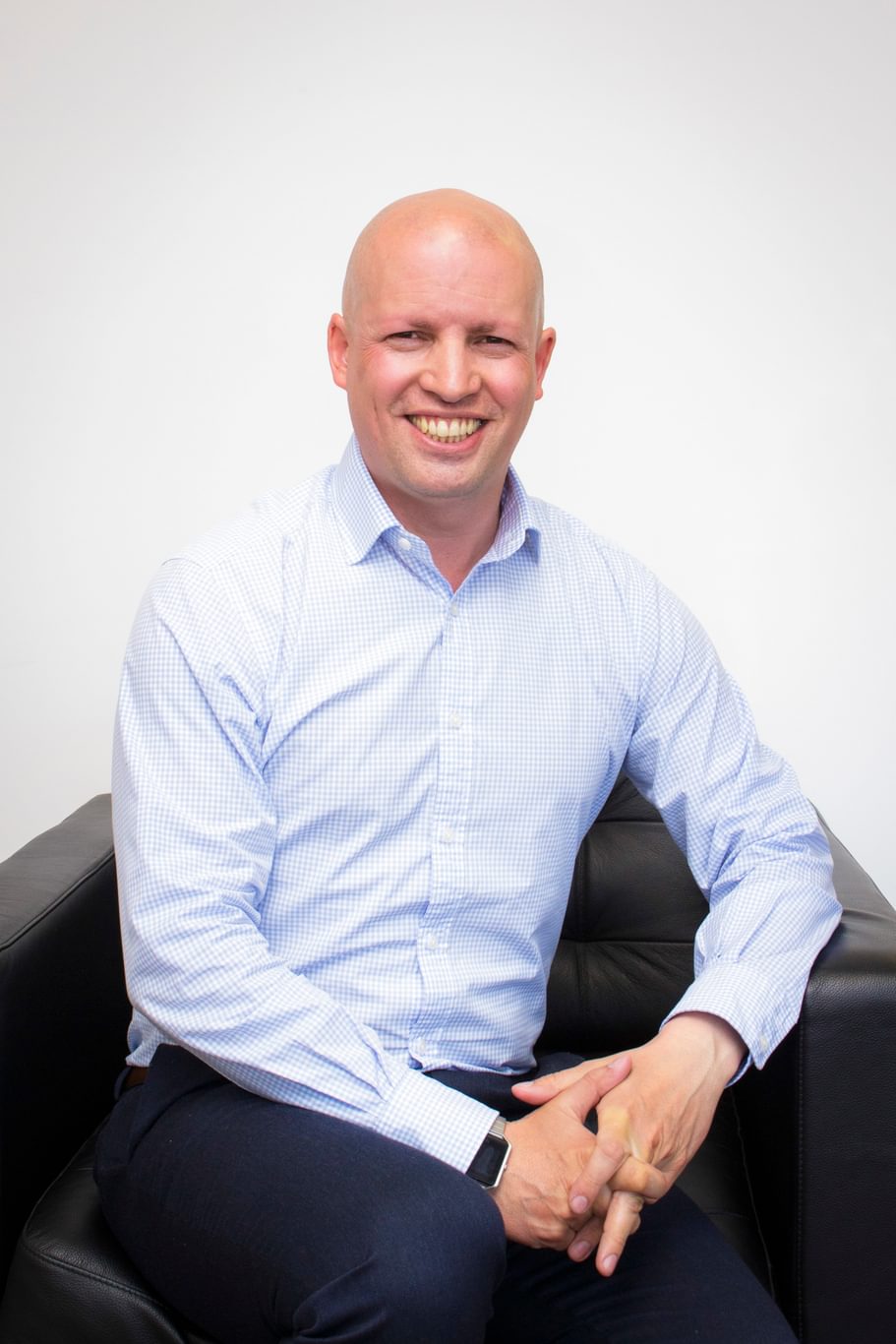
People Profile: Director Nick Thursby on cementing Chapman Taylor’s excellent reputation in the West of England
Chapman Taylor Director Nick Thursby joined Chapman Taylor’s London studio in 1999 and spent several years as part of our UK Concept Design team.
Now a UK Board Director, Nick is responsible for the ongoing development and management of the Bristol studio, which he was jointly responsible for establishing in 2012. He has worked on the Castle Park View residential development in Bristol city centre, the extension at Ashford Designer Outlet Centre in Kent, The Orchard Centre in Didcot and Princesshay in Exeter, among other major projects across the UK. Nick also leads Chapman Taylor’s Sustainability Group, responsible for best-practice environmental design initiatives and innovation.
In this profile, Nick tells us about his creative family background, the diverse opportunities he has embraced during his career at Chapman Taylor and his vision for the future direction of our Bristol studio.
Tell us about your background
I was born and raised in Bristol, and my family background is quite creative – my grandad was a furniture maker, my uncle was an architect and my dad is also a building designer. I always wanted to be a designer, and architecture seemed the obvious choice because I am much better communicating visually and verbally than with writing, and I also enjoyed maths and technical subjects. If I hadn’t been an architect, I’d probably have been a carpenter.
I studied for an HND in Building Studies at South Devon College in Torquay and at The University of Plymouth before taking a degree in Architecture at the latter. The head of the university’s school of architecture, Adrian Gayle, was a memorable character; by coincidence, he had previously worked at Chapman Taylor for a few years.
After my degree, I spent a year working at an architectural practice in Bristol before studying for my diploma in Sheffield. After two years there, I joined Chapman Taylor’s London studio in August 1999, qualifying as an architect soon afterwards.
Why did you join Chapman Taylor?
I had worked at a very small practice in Bristol during my year out, but I wanted to work for a large firm on big schemes in London. Chapman Taylor, at the time, was the third largest architectural firm in the UK, and the scale and diversity of Chapman Taylor’s portfolio interested me greatly. I also loved the international, multicultural make-up of the London studio.
Ironically, over subsequent years, having decided that I wanted to work on major projects in the capital, I found myself commuting back to the south-west of England a lot as we took on large and interesting projects in the region, such as the mixed-use Princesshay development in Exeter and Cabot Circus in Bristol.
Tell us about the early projects you worked on.
When I joined, I first worked on a Land Securities project in Belfast, where we continued to work for a number of years, as well as on railway station designs for Connex.
I subsequently joined the UK Concept Design team led by Main Board Director Adrian Griffiths, working on designs for Princesshay, Cabot Circus and Trinity Leeds, all for Land Securities, as well as early-stage concepts at the O2 Arena in Greenwich and at Centre MK in Milton Keynes.
I was given a lot of space to run with an idea when that idea was considered worthy, which I greatly appreciated. It was also great fun working in the London studio.
You helped to set up Chapman Taylor’s in-house Sustainability Group, which you now head, as well?
Yes – the Sustainability Group initially focused on internal aspects of the office – for example, recycling all the wastepaper we used to produce and minimising our consumption. We eliminated a lot of in-house material waste through measures such as this removing individual waste bins, plastic cups and bottles..
We then focused on making a difference to how building projects were approached – educating ourselves and educating clients. Our role was to inform staff of developments in environmental design best practice, using short green guides to keep the studio informed.
We were subsequently tasked with initiating an environmental management system to achieve ISO 14001 accreditation. Not many architectural firms had this in place at the time, so we had to develop our own approach to achieving this. It was a big victory for us, and allowed Chapman Taylor to bid for projects with higher sustainability requirements.
When did you establish the Bristol studio?
The impetus for the move came from having strong projects in the region, having completed the very successful Cabot Circus development and with Princesshay in Exeter on the way. There had been proposals to establish a Bristol studio before, which hadn’t been fully explored, but our passion for the area and for the idea of basing Chapman Taylor here helped to convince the Board that the time was right.
We established the studio in October 2012, and initially acted as essentially an annex of the London studio – we brought projects with us from London, such as the Bus Station Redevelopment in Exeter, Lancaster Canal Corridor and St David’s 2 in Cardiff. while supporting both the London and Manchester studios on other projects.
Before long, we developed our own approach and culture and started bringing in our own business. We are now at our third studio address, having expanded from three people to 30 within five years of opening. We are known as a strong presence in the region, combining local market knowledge and contacts with the resources and capabilities of a global firm.
Tell us about your current work?
We have designed and are delivering Bristol’s tallest residential scheme at Castle Park View, right in the heart of the city centre. The development, for which we are also providing interior design, will provide 375 high-quality homes through a mixture of Build-to-Rent and affordable housing.
We are continuing to work on asset enhancement works at Princesshay for the Crown Estate, which acquired the scheme from Land Securities, to help repurpose areas which have had to adapt to the challenges facing retail globally – we are experts in transforming city centre commercial developments with a mix of new and well-considered uses, such as office, leisure, F&B and residential spaces. Large department stores, for example, are often now resizing, with the vacated space presenting opportunities to create a diverse and sustainable mix of uses and amenities such as food halls, apartments and cinemas.
We have designed two major student residential schemes in Bristol city centre, at Avon Street and Freestone Road, as part of the Temple Quarter Enterprise Zone – between them, they will accommodate 706 students and provide associated amenities. We are also working on asset enhancement projects across the region, including the transformation of The Galleries shopping centre here in Bristol into a vibrant mixed-use development – it will become a significant example of how to repurpose outdated retail schemes to include an attractive mix of leisure, bars, restaurants, cafés, offices, apartments and other functions.
What do you see as the future direction of the Bristol studio?
We have a very diverse studio with a mix of nationalities and career stages, which is wonderful for bringing different perspectives to what we do. This creative vibrancy is at the heart of what makes us successful. It’s extremely important to me to work collaboratively and to create a nurturing environment in which young talent can flourish.
With Associate Directors Kieran Bradley and Jonathan Harris, we have a very strong management team. The studio has the capacity to expand to 50 people, and we are beginning the process of taking on support team members in areas which traditionally would have been centralised at the London studio, such as Graphics and IT.
While we continue to see retail and F&B as important within mixed use schemes for us we have become well known in the city and beyond for our work in the residential sector, and we will be looking to consolidate our strong reputation in the Build-to-Rent, student accommodation and private residential fields in the coming years.
What do you take satisfaction from, looking at your time with Chapman Taylor?
I started at Chapman Taylor in 1999 as a Part III student and I’m now a UK Board Director – I have been given wonderful opportunities, for which I am grateful, to work on extraordinary and diverse projects alongside a variety of talented colleagues at all project stages.
That wide range of experiences on offer at Chapman Taylor allowed me to develop and is a key reason I continued to work here all this time. My experience has been that the company encourages and rewards effort, merit and respect – if you are committed, talented and a team player, you will do very well at Chapman Taylor.
I had worked at a very small practice in Bristol during my year out, but I wanted to work for a large firm on big schemes in London. The scale and diversity of Chapman Taylor’s portfolio interested me greatly. I also loved the international, multicultural make-up of the London studio.
Ironically, over subsequent years, having decided that I wanted to work on major projects in the capital, I found myself commuting back to the south-west of England a lot as we took on large and interesting projects in the region, such as the mixed-use Princesshay development in Exeter and Cabot Circus in Bristol.
Tell us about the early projects you worked on.
When I joined, I first worked on a Land Securities project in Belfast, where we continued to work for a number of years, as well as on railway station designs for Connex.
I subsequently joined the UK Concept Design team led by Main Board Director Adrian Griffiths, working on designs for Princesshay, Cabot Circus and Trinity Leeds, all for Land Securities, as well as early-stage concepts at the O2 Arena in Greenwich and at Centre MK in Milton Keynes.
I was given a lot of space to run with an idea when that idea was considered worthy, which I greatly appreciated. It was also great fun working in the London studio.
You helped to set up Chapman Taylor’s in-house Sustainability Group, which you now head, as well?
Yes – the Sustainability Group initially focused on internal aspects of the office – for example, recycling all the wastepaper we used to produce and minimising our consumption. We eliminated a lot of in-house material waste through measures such as this removing individual waste bins, plastic cups and bottles..
We then focused on making a difference to how building projects were approached – educating ourselves and educating clients. Our role was to inform staff of developments in environmental design best practice, using short green guides to keep the studio informed.
We were subsequently tasked with initiating an environmental management system to achieve ISO 14001 accreditation. Not many architectural firms had this in place at the time, so we had to develop our own approach to achieving this. It was a big victory for us, and allowed Chapman Taylor to bid for projects with higher sustainability requirements.
When did you establish the Bristol studio?
The impetus for the move came from having strong projects in the region, having completed the very successful Cabot Circus development and with Princesshay in Exeter on the way. There had been proposals to establish a Bristol studio before, which hadn’t been fully explored, but our passion for the area and for the idea of basing Chapman Taylor here helped to convince the Board that the time was right.
We established the studio in October 2012, and initially acted as essentially an annex of the London studio – we brought projects with us from London, such as the Bus Station Redevelopment in Exeter, Lancaster Canal Corridor and St David’s 2 in Cardiff. while supporting both the London and Manchester studios on other projects.
Before long, we developed our own approach and culture and started bringing in our own work. We are now at our third studio address, having expanded from three people to 30 within five years of opening. We are known as a strong presence in the region, combining local market knowledge and contacts with the resources and capabilities of a global firm.
Tell us about your current work?
We have designed and are delivering Bristol’s tallest residential scheme at Castle Park View, right in the heart of the city centre. The development, for which we are also providing interior design, will provide 375 high-quality homes through a mixture of Build-to-Rent and affordable housing.
We are continuing to work on asset enhancement works at Princesshay for the Crown Estate, which acquired the scheme from Land Securities, to help repurpose areas which have had to adapt to the challenges facing retail globally – we are experts in transforming city centre commercial developments with a mix of new and well-considered uses, such as office, leisure, F&B and residential spaces. Large department stores, for example, are often now resizing, with the vacated space presenting opportunities to create a diverse and sustainable mix of uses and amenities such as food halls, apartments and cinemas.
We have designed two major student residential schemes in Bristol city centre, at Avon Street and Freestone Road, as part of the Temple Quarter Enterprise Zone – between them, they will accommodate 706 students and provide associated amenities. We are also working on asset enhancement projects across the region, including the transformation of The Galleries shopping centre here in Bristol into a vibrant mixed-use development – it will become a significant example of how to repurpose outdated retail schemes to include an attractive mix of leisure, bars, restaurants, cafés, offices, apartments and other functions.
What do you see as the future direction of the Bristol studio?
We have a very diverse studio with a mix of nationalities and career stages, which is wonderful for bringing different perspectives to what we do. This creative vibrancy is at the heart of what makes us successful. It’s extremely important to me to work collaboratively and to create a nurturing environment in which young talent can flourish.
With Associate Directors Kieran Bradley and Jonathan Harris, we have a very strong management team. The studio has the capacity to expand to 50 people, and we are beginning the process of taking on support team members in areas which traditionally would have been centralised at the London studio, such as Graphics and IT.
While we continue to see retail and F&B as important within mixed use schemes for us we have become well known in the city and beyond for our work in the residential sector, and we will be looking to consolidate our strong reputation in the Build-to-Rent, student accommodation and private residential fields in the coming years.
What do you take satisfaction from, looking at your time with Chapman Taylor?
I started at Chapman Taylor in 1999 as a Part III student and I’m now a UK Board Director – I have been given wonderful opportunities, for which I am grateful, to work on extraordinary and diverse projects alongside a variety of talented colleagues at all project stages.
That wide range of experiences on offer at Chapman Taylor allowed me to develop and is a key reason I continued to work here all this time. My experience has been that the company encourages and rewards effort, merit and respect – if you are committed, talented and a team player, you will do very well at Chapman Taylor.

